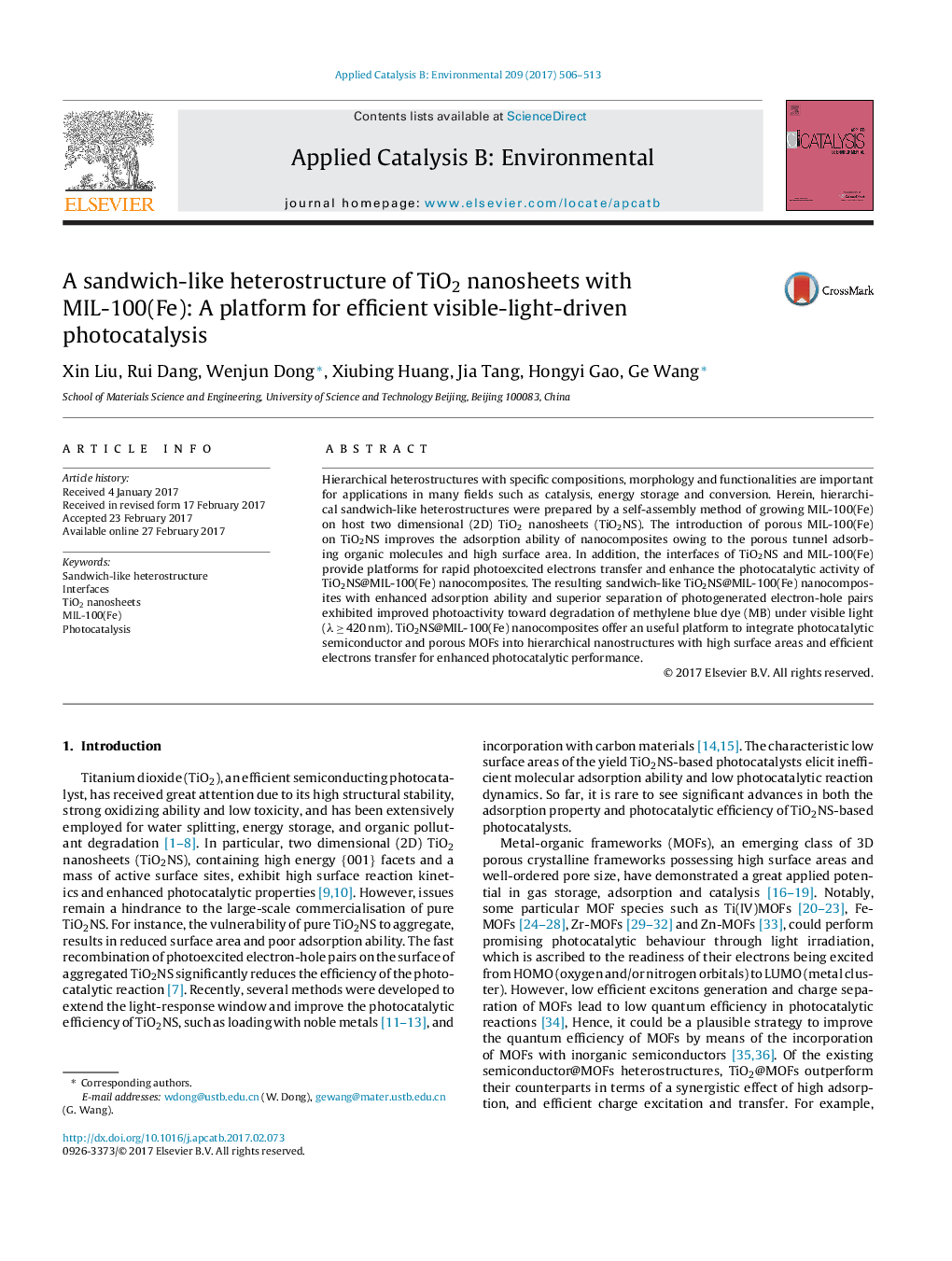| Article ID | Journal | Published Year | Pages | File Type |
|---|---|---|---|---|
| 6454217 | Applied Catalysis B: Environmental | 2017 | 8 Pages |
â¢A hierarchical sandwich-like TiO2NS@MIL-100(Fe) heterostructure was developed through a self-assembled method by incorporating MIL-100(Fe) into TiO2NS.â¢TiO2NS@MIL-100(Fe) nanocomposites exhibit high adsorption ability owing to the introduction of MIL-100(Fe) with the porous tunnel adsorbing organic molecules.â¢The resulting sandwich-like TiO2NS@MIL-100(Fe) nanocomposites exhibited enhanced the photocatalytic activity due to the interfaces of TiO2NS and MIL-100(Fe) which provide platforms for rapid photoexcited electrons transfer, facilitated separation of electron-hole pairs.
Hierarchical heterostructures with specific compositions, morphology and functionalities are important for applications in many fields such as catalysis, energy storage and conversion. Herein, hierarchical sandwich-like heterostructures were prepared by a self-assembly method of growing MIL-100(Fe) on host two dimensional (2D) TiO2 nanosheets (TiO2NS). The introduction of porous MIL-100(Fe) on TiO2NS improves the adsorption ability of nanocomposites owing to the porous tunnel adsorbing organic molecules and high surface area. In addition, the interfaces of TiO2NS and MIL-100(Fe) provide platforms for rapid photoexcited electrons transfer and enhance the photocatalytic activity of TiO2NS@MIL-100(Fe) nanocomposites. The resulting sandwich-like TiO2NS@MIL-100(Fe) nanocomposites with enhanced adsorption ability and superior separation of photogenerated electron-hole pairs exhibited improved photoactivity toward degradation of methylene blue dye (MB) under visible light (λ â¥Â 420 nm). TiO2NS@MIL-100(Fe) nanocomposites offer an useful platform to integrate photocatalytic semiconductor and porous MOFs into hierarchical nanostructures with high surface areas and efficient electrons transfer for enhanced photocatalytic performance.
Graphical abstractThe sandwich-like heterostructural TiO2NS@MIL-100(Fe) nanocomposites exhibit high adsorption ability and enhanced photocatalytic property. The porous MIL-100(Fe) on TiO2NS improves the adsorption ability of nanocomposites owing to the porous tunnel adsorbing organic molecules, and the interfaces of TiO2NS and MIL-100(Fe) provide platforms for rapid photoexcited electrons transfer from MIL-100(Fe) to TiO2NS and enhance the photocatalytic activity.
